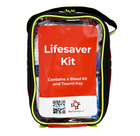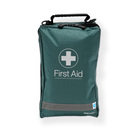Fainting
Unlock This Video Now for FREE
This video is normally available to paying customers.
You may unlock this video for FREE. Enter your email address for instant access AND to receive ongoing updates and special discounts related to this topic.
Understanding and Managing Fainting
What Causes Fainting?
Our brains depend on a continuous flow of oxygenated blood to function correctly. When this blood flow is temporarily reduced, you might experience symptoms like dizziness, nausea, or an odd feeling. If this reduction persists, it can lead to fainting—a brief loss of consciousness. Certain individuals are more prone to fainting than others.
Common Causes of Fainting
There are numerous potential causes of fainting, including:
- Anxiety
- Hunger
- Pregnancy
- Stress
- Tiredness
- Pain
- Overheating
- Prolonged periods of standing or sitting still
These factors can cause blood to pool in the legs, decreasing the amount of blood reaching the brain.
What to Do if Someone Feels Faint
If someone feels faint, assist them in lying down immediately to restore blood flow to the brain. Sitting down is less effective and can lead to falls if they faint while leaning forward. Additionally, opening a window to allow fresh air can help if indoors.
Managing a Fainted Person
If someone has fainted, follow these steps:
- Lay them on their back and raise their legs by about thirty centimetres. Support their legs with your shoulder or an object like a box or bag to enhance blood flow to the brain.
- Monitor their recovery: As they regain consciousness, calmly explain what has happened, as they might be confused or disoriented. Assist them in standing up slowly to avoid another fainting episode. If they feel faint again, have them lie down and raise their legs until fully recovered.
- Check their airway and breathing: If they do not quickly regain consciousness, open their airway and check for breathing. Follow standard procedures for treating an unconscious casualty if they are not breathing.
- Seek medical help: Generally, emergency services are not required unless the person has sustained injuries from the fall or does not regain consciousness. However, consider calling a family member or friend to escort them home.
Special Considerations
For those in the late stages of pregnancy, lying on the left side is advisable to prevent restricted blood flow back to the heart. Frequent fainting spells may indicate an underlying health issue, so a visit to the doctor is recommended if episodes are recurrent. If fainting occurs during exercise or is accompanied by a seizure, always alert emergency medical services.
Conclusion
By understanding these guidelines for managing fainting, you can provide prompt and effective care, minimise the risk of injury, and help ensure a swift recovery.







